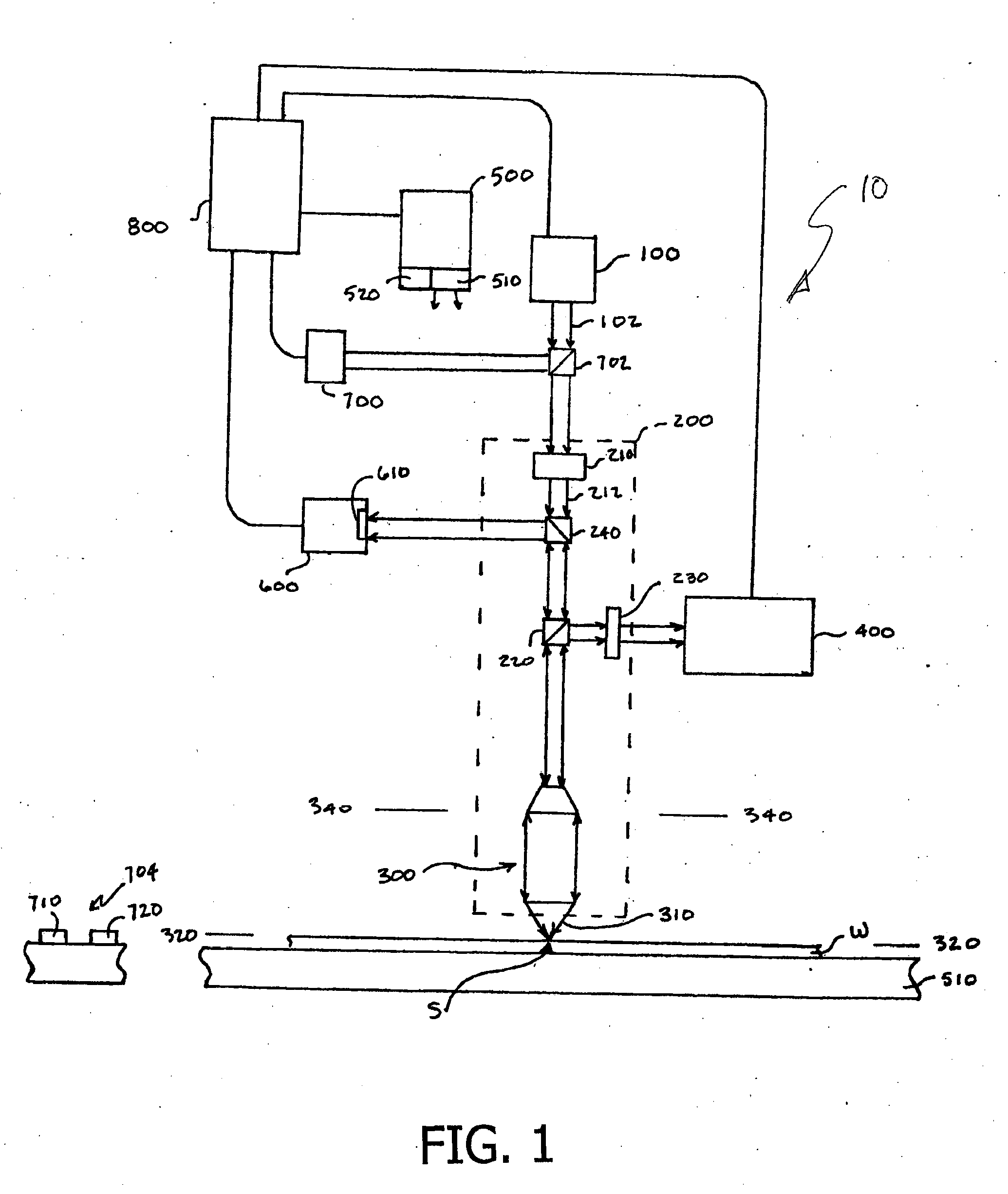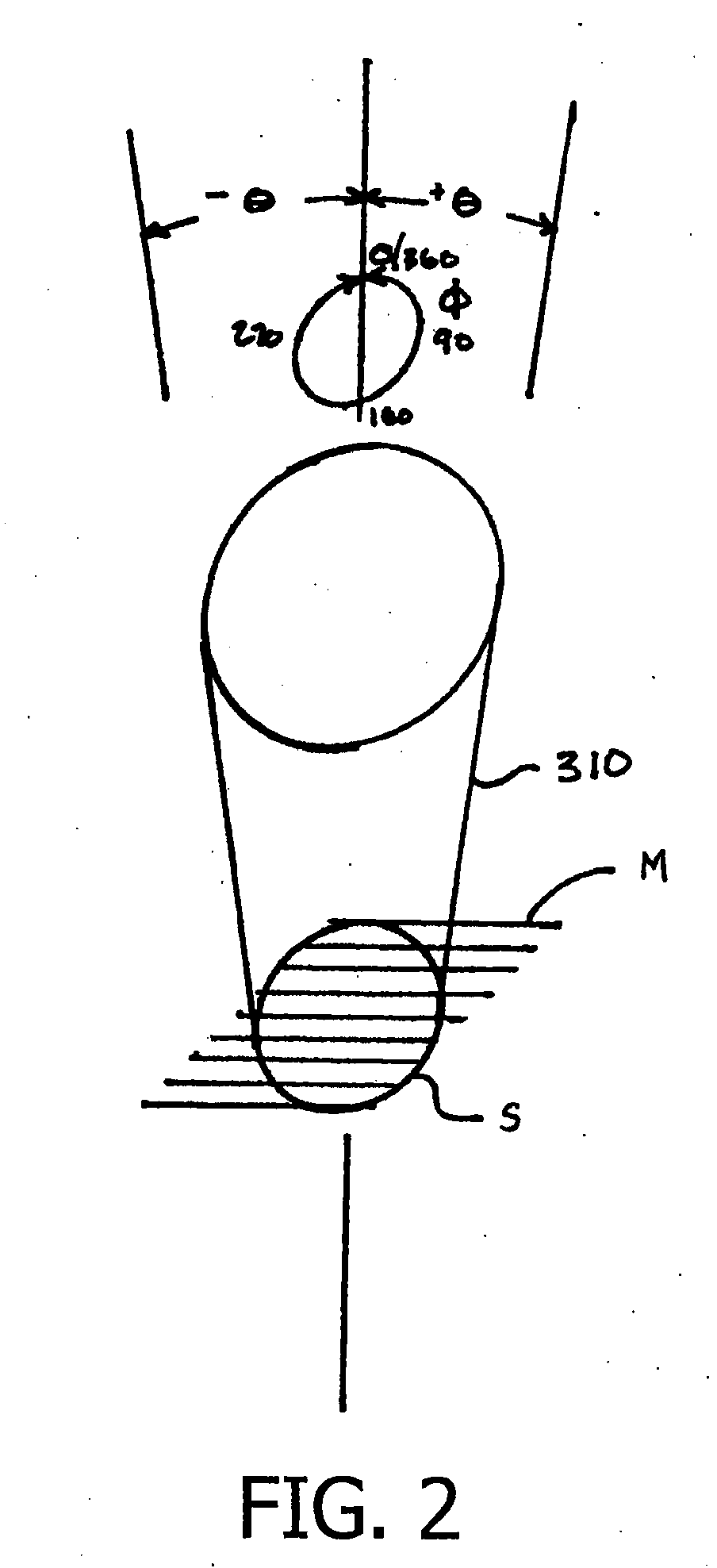Apparatus and methods for scatterometry of optical devices
a technology of optical devices and apparatus, applied in the direction of measurement devices, semiconductor devices, instruments, etc., can solve the problems of insufficient pc structure measurement, complex return radiation pattern, and less than optimal led performan
- Summary
- Abstract
- Description
- Claims
- Application Information
AI Technical Summary
Problems solved by technology
Method used
Image
Examples
Embodiment Construction
A. Overview
[0034] The present invention is directed toward evaluating photonic crystal (PC) microstructures on optical workpieces and other types of substrates. Many applications of the present invention are directed toward scatterometers and methods of using scatterometry to determine several parameters of periodic microstructures, pseudo-periodic structures, and other very small structures having features sizes as small as 100 nm or less. Several specific embodiments of the present invention are particularly useful in the semiconductor industry to determine the width, depth, line edge roughness, wall angle, film thickness, and many other parameters of the features formed in microprocessors, memory devices, and other semiconductor devices. The scatterometers and methods of the invention, however, are not limited to semiconductor applications and can be applied equally well in other applications.
[0035] One embodiment of the invention is directed toward a scatterometer for evaluatin...
PUM
| Property | Measurement | Unit |
|---|---|---|
| width | aaaaa | aaaaa |
| sizes | aaaaa | aaaaa |
| azimuth angles | aaaaa | aaaaa |
Abstract
Description
Claims
Application Information
 Login to View More
Login to View More - R&D
- Intellectual Property
- Life Sciences
- Materials
- Tech Scout
- Unparalleled Data Quality
- Higher Quality Content
- 60% Fewer Hallucinations
Browse by: Latest US Patents, China's latest patents, Technical Efficacy Thesaurus, Application Domain, Technology Topic, Popular Technical Reports.
© 2025 PatSnap. All rights reserved.Legal|Privacy policy|Modern Slavery Act Transparency Statement|Sitemap|About US| Contact US: help@patsnap.com



